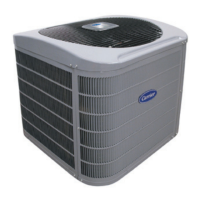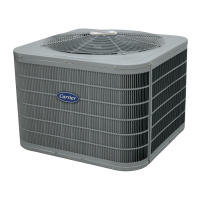17
6. Unit installation
Place the unit as recommended above and do duct work. Connect canvas cloth with air supply duct of
indoor unit.
Flexible duct and changing the blower housing orientation in the field as per site requirement subjected
to all recommended components are in place (Refer ANNEXURE NO. 2, page no.89).
Air distribution
Install the air distribution system completely with ductwork, supply and return air grilles / diffusers, etc.
following recommended good practice.
Connect the supply air duct with canvas cloth at the mouth of the unit for eliminating vibrations and duct
alignment problems, and as per recommended ducting practice.
I. Ducting system design
Design of ducts for normal applications may be done using the equal friction method. The method
employs the same friction loss per foot of length for the entire system. The procedure is outlined below:
1. Sketch the air distribution layout complete with duct run lengths, location of supply registers and
return grilles, air quantities through each outlet and in each circuit, & fan location and static.
2. Select an initial velocity in the main duct. For main supply duct, maximum air velocity is 1200
FPM, preferable is 1000 FPM. Maximum2 branch supply air duct velocity is 1000 FPM,
preferable is 800 FPM. Maximum diffuser collar velocity is 500 FPM.
3. Knowing initial velocity and air quantity (CFM) of the machine, find friction rate using a Friction
Chart.
4. Select equivalent round duct area corresponding to the point from the Friction Chart. Use the
following relation to obtain rectangular duct dimensions.
5. [By substituting ‘D’, and a value of ‘a’ or ‘b’ in the relation to find the value of other side (depth /
width of duct)].
6. Equivalent Diameter -
a. D = 1.3 x (a x b)
0.623
/ (a + b)
0.23
7. To determine the total friction loss the fan must overcome; calculate total equivalent length of
the circuit run having the longest length plus fittings equivalent length (largest friction drop).
TOTAL EQUIVALENT LENGTH may be roughly assumed as CIRCUIT STRAIGHT LENGTH +
50% OF STRAIGHT LENGTH.
Find total pressure loss using the following relation:
TOTAL PRESSURE LOSS = TOTAL EQUIVALENT LENGTH X FRICTION RATE/100
Friction rate can be calculated analytically or graphically.
a. Friction Rate = Available Static Pressure / Total Effective Length

